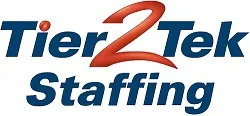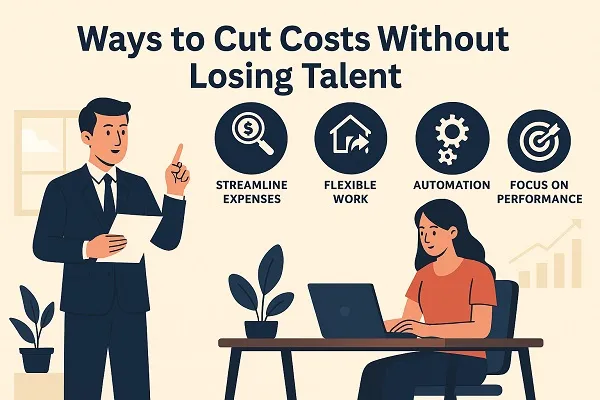Cutting costs without losing talent is one of the most important strategies for sustainable business growth. Many companies mistakenly assume reducing expenses means cutting headcount, but layoffs often result in lost expertise, lower morale, and higher recruitment costs down the line. The smarter approach is to implement cost-saving measures that protect your workforce while strengthening organizational efficiency.
This article explores practical, proven ways to cut costs without sacrificing your best employees, ensuring both financial stability and long-term success.
Streamline Operational Expenses
Operational costs are often the easiest to overlook but can be the most straightforward to reduce. By carefully evaluating where money is spent, organizations can cut costs without affecting their employees’ roles or satisfaction.
Real-world examples:
- Office leases: One tech startup realized that only 40% of its staff came into the office regularly. By downsizing to a smaller space and using coworking memberships, they reduced rent costs by 35% annually.
- Vendor contracts: A retail business renegotiated its shipping contracts and saved $50,000 a year without touching employee wages.
Actionable steps:
- Audit recurring expenses quarterly.
- Cancel unused or duplicate software subscriptions.
- Renegotiate agreements with suppliers and service providers.
Optimize Workforce Planning
Misaligned workloads create inefficiencies that drain resources. Some departments may be overstaffed while others are overworked. By optimizing workforce planning, businesses can ensure their teams are productive without needing layoffs.
Practical strategies:
- Workload analysis: Regularly review project timelines and employee hours to identify imbalances.
- Cross-training: Encourage employees to learn complementary skills. For example, a customer service rep trained in basic IT troubleshooting reduces reliance on extra contractors.
- Project management software: Tools like Asana or Trello make it easier to assign tasks effectively, preventing bottlenecks.
This approach creates a leaner, more agile workforce while maintaining employee security and morale.
Offer Flexible Work Arrangements

Flexible work has become more than a perk—it’s now a proven way to cut business costs while retaining top talent.
- Remote work reduces overhead for utilities, parking, and office supplies.
- Hybrid schedules allow downsizing office space.
- Compressed workweeks save costs on utilities and increase employee satisfaction.
A 2022 survey by Owl Labs found that companies offering hybrid work models saved an average of $11,000 per employee annually. Employees also reported higher job satisfaction, which leads to lower turnover and reduced recruitment costs.
Reduce Turnover with Retention Strategies
Employee turnover is expensive. According to Gallup, replacing a single employee can cost up to two times their annual salary. Retaining existing talent saves far more than cutting positions.
Retention tactics that reduce costs long-term:
- Recognition programs: A manufacturing company reduced turnover by 15% simply by implementing monthly recognition awards.
- Transparent pay: Employees who understand compensation structures feel more secure and are less likely to leave for small raises elsewhere.
- Internal promotions: Promoting from within avoids recruitment fees and keeps institutional knowledge intact.
Turnover doesn’t just cost money—it also disrupts productivity and damages morale. Strong retention strategies cut costs indirectly by stabilizing your workforce.
Automate Repetitive Processes
Automation doesn’t mean replacing employees; it means freeing them to do more valuable work. By automating repetitive tasks, businesses save time and reduce errors.
Examples of automation in action:
- Accounting: Automating invoice processing helped a mid-sized business save 400 hours of manual work annually.
- Customer service: Chatbots resolved 30% of support tickets at a telecom company, freeing human agents to handle complex issues.
- HR tasks: Automated onboarding and payroll cut administrative costs while improving accuracy.
The goal is to let employees focus on creative, problem-solving tasks that drive growth while automation handles the repetitive work.
Reevaluate Employee Perks and Benefits

Not all perks are equally valued by employees. Companies often overspend on benefits that employees rarely use. By aligning perks with what matters most to staff, businesses save money while keeping morale high.
Cost-effective adjustments:
- Replace underused on-site gyms with wellness stipends employees can spend how they choose.
- Shift from daily catered meals to a monthly meal allowance.
- Offer mental health resources instead of expensive perks that don’t improve retention.
When employees feel benefits are tailored to their needs, they’re more engaged—and engagement leads to cost savings through higher productivity and reduced turnover.
Encourage Employee Input on Cost Savings
Employees often see waste before leadership does. Involving them in cost-cutting initiatives not only saves money but also builds trust.
- Launch a cost-saving suggestion program with incentives.
- Host brainstorming sessions to identify inefficiencies.
- Publicly recognize employees whose ideas lead to savings.
For example, an employee at a logistics company suggested consolidating delivery routes, which saved $200,000 annually. That one insight was more impactful than any top-down cost-cutting measure.
Focus on Performance, Not Headcount
Cutting headcount to save money often leads to greater costs in the long run. Instead, businesses should focus on maximizing performance with the team they already have.
Strategies to drive performance:
- Set clear goals tied to measurable outcomes.
- Provide training and tools that help employees do their jobs faster.
- Identify inefficient processes rather than blaming individuals.
One financial services firm improved team productivity by 25% after simplifying its approval workflows, proving that efficiency gains often eliminate the need for downsizing.
Leverage Outsourcing and Partnerships

Outsourcing doesn’t mean replacing talent—it means strategically reducing costs on non-core tasks. By outsourcing selectively, businesses maintain strong internal teams while controlling expenses.
Effective outsourcing examples:
- Payroll and tax compliance through specialized providers.
- IT support handled by managed service firms.
- Seasonal hiring needs filled with contractors instead of full-time hires.
Partnerships also cut costs. For example, a small business partnered with a local marketing agency instead of hiring an in-house team, saving $80,000 annually.
Build a Culture of Efficiency
A culture of efficiency ensures long-term cost savings. When employees embrace resourcefulness, businesses reduce waste naturally.
- Encourage teams to think about the ROI of every project.
- Celebrate small cost-saving wins to build momentum.
- Train managers to identify and eliminate inefficiencies regularly.
When cost-conscious thinking becomes part of company culture, savings are sustained without threatening talent retention.
Cutting costs without losing talent is possible when businesses focus on smarter operations, employee engagement, and performance-driven strategies. By optimizing workflows, offering flexibility, automating wisely, and involving employees in solutions, organizations save money while protecting their most valuable asset—their people.
Content reviewed and published by Tier2Tek Staffing Editorial Team .

